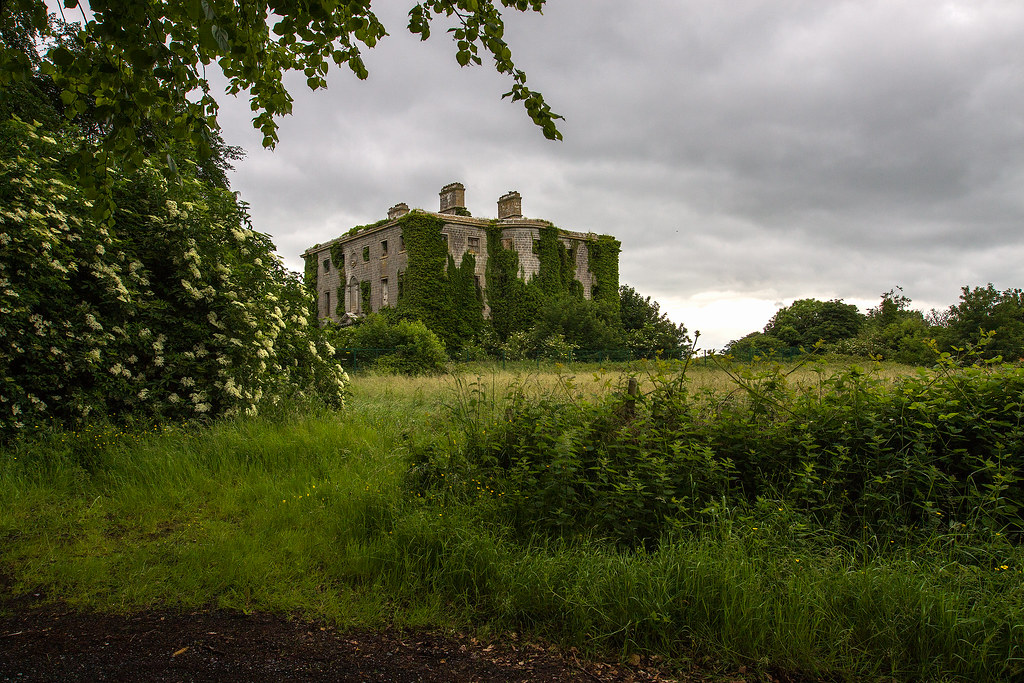The Belvedere House and Gardens located on the shores of Lough Ennell near Mullingar, County Westmeath in Ireland, contains several architectural oddities and follies, including the largest one in Ireland—the aptly named “Jealous Wall”. This three-storey structure, designed to resemble the crumbling ruins of an old Gothic castle, was built by Robert Rochfort, an ambitious aristocrat for whom jealousy and revenge were the key themes in life.
Robert Rochfort, the first earl of Belvedere, was one of eleven children born to George Rochfort, a friend of the famous Irish writer Jonathan Swift. Robert Rochfort, whose infamy as a husband would earn him the title of the “wicked earl”, had lost his first wife to smallpox after one year of marriage. After the death of his first wife, Robert Rochfort married the sixteen-years-old Mary Molesworth, who in the course of the next few years, bore her husband four children. But Robert had no interest in family life and often left her with the children on the family estate at Gaulstown, in Kilbryde, Scotland, while he roamed the London and Dublin royal courts pursuing a bachelor lifestyle.
The Jealous Wall. Photo credit: Josephine mc morrow/Flickr
During his absence, Mary often visited her brother-in-law, Arthur Rochfort, who lived nearby. Robert grew suspicious, or perhaps—as some historians suggest— he simply wanted to get rid of her, and accused Mary of adultery. As punishment, Robert locked her up in the family house at Gaulstown, where she remained imprisoned for 31 years. The servants attending her were instructed not to talk to her, and not even her children were allowed to visit their mother. The long imprisonment left her so severely damaged that she took to wandering the house and talking to portraits as if they were real people. When she was finally released after Robert’s death in 1774, Mary had become a deranged hag incapable of recognizing her own sons.
As for his brother, Arthur, Robert sued him for £2,000—a sizable amount for the time. When he couldn’t pay, Arthur was tossed in a debtor’s prison where he died.
Meanwhile, Robert returned to Ireland and built a new mansion, the Belvedere House, and took up residence there. Few years later, his older brother George, who lived on the adjacent estate at Tudenham, built an even grander mansion within sight of Robert’s splendid new home. Consumed by jealousy, Robert built an enormous wall to block the view of his brother’s much larger house. This became known as the Jealous Wall.
On November 13, 1774, Robert’s lifeless body was discovered near his house. His skull was fractured and he had bled to death. Some believe that Robert was murdered. Others say that he slipped and fell while walking in the grounds of Belvedere House, and struck his head on a rock. Whatever the true story is, it was an apt ending to a cruel tyrant. After his death, George, now the 2nd Earl of Belvedere, freed his mother from imprisonment. He even demolished the Gaulstown House and built a smaller house in the grounds. But Mary refused to stay there and set sail for France, where she became a nun and lived the rest of her life as a hermit.
The Rochfort family’s sordid affairs and the tragic story of his wife’s imprisonment was one of the great social scandals of 18th-century Ireland. Today, the wicked earl’s notoriety draws tens of thousands of visitors to the Belvedere House every year.
The Belvedere House. Photo credit: Roy Wooters/Flickr
Photo credit: Roy Wooters/Flickr
Photo credit: Roy Wooters/Flickr
The Tudenham Park House, built by Robert’s brother George, that Robert despised.
Sources: Irish Times / A Trip to Ireland / Buildings of Ireland / Wikipedia / molesworth.id.au




Amazing story! Thank you for sharing! Belvedere looks great!
ReplyDelete